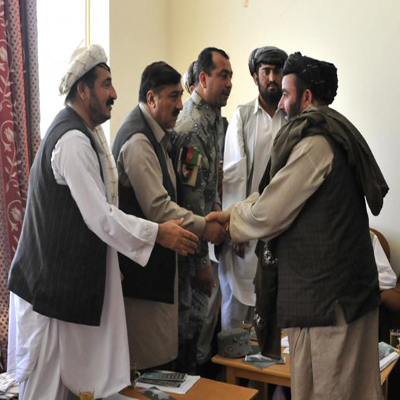NSI PATHWAYS – RECONCILIATION AND REINTEGRATION
This NSI Pathways analysis examines the degree of overlap between reconciliation and reintegration markers, along with an assessment of the status of these markers in Afghanistan.

NSI Pathways™ – Reconciliation and Reintegration
POC: For inquiries regarding this work and to receive a copy of the associated report, please contact Dr. Sabrina Pagano (spagano@nsiteam.com).
Project Team: Belinda Bragg, Ph.D. (Principal Research Scientist); Sarah Canna (Principal Analyst); Ali Jafri (Senior Analyst); Larry Kuznar, Ph.D. (Chief Cultural Sciences Officer); Eric Kuznar (Intern); Sabrina Pagano, Ph.D. (Principal Research Scientist); John A. Stevenson, Ph.D. (Principal Research Scientist).
Using the NSI Pathways™ framework and methodology, this work explores the relationship between the markers for reconciliation and reintegration (R&R). Examination of the two sets of markers indicates that there is a significant degree of overlap between the two processes, and that—in the case of Afghanistan—reintegration markers are a complete subset of reconciliation markers. This finding suggests that reintegration in Afghanistan can be pursued without undermining or prohibiting reconciliation.
However, an assessment of these markers in Afghanistan reveals that there is a striking absence of critical drivers for R&R, both overall and compared with four historical case studies. Moreover, there is a similar or greater number of critical barriers to R&R in Afghanistan compared with other cases. Successful R&R appears to require an equal or greater number of drivers than barriers. Yet, in Afghanistan, there are more barriers than drivers to R&R, suggesting that these outcomes will be difficult to achieve.
R&R markers are also examined using the DIMEFIL framework to assess which USG agencies are best positioned to influence R&R. Almost all R&R drivers are Diplomatic or Informational, though the military can serve a crucial support role in addressing these drivers (e.g., through information operations, key leader engagement, force protection, military police functions, etc.). The military can also lead some efforts to address R&R barriers, which fall more firmly within its purview. For example, combatting decentralization and privatization of violence through militias reduces a barrier to state monopoly on authorization of violence.